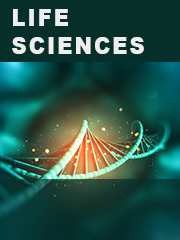Report overview
Heparin, a highly sulfated glycosaminoglycan, is widely used as an injectable anticoagulant, and has the highest negative charge density of any known biological molecule. It can also be used to form an inner anticoagulant surface on various experimental and medical devices such as test tubes and renal dialysis machine.
Most of the Heparin product is existed in a form of Heparin Sodium or Heparin Calcium.
This report is revolving around Heparin Active Pharmaceutical Ingredients (API).
This report aims to provide a comprehensive presentation of the global market for Heparin (Heparin Sodium and Heparin Calcium), with both quantitative and qualitative analysis, to help readers develop business/growth strategies, assess the market competitive situation, analyze their position in the current marketplace, and make informed business decisions regarding Heparin (Heparin Sodium and Heparin Calcium). This report contains market size and forecasts of Heparin (Heparin Sodium and Heparin Calcium) in global, including the following market information:
Global Heparin (Heparin Sodium and Heparin Calcium) Market Revenue, 2018-2023, 2024-2029, ($ millions)
Global Heparin (Heparin Sodium and Heparin Calcium) Market Sales, 2018-2023, 2024-2029, (K MT)
Global top five Heparin (Heparin Sodium and Heparin Calcium) companies in 2022 (%)
The global Heparin (Heparin Sodium and Heparin Calcium) market was valued at US$ million in 2022 and is projected to reach US$ million by 2029, at a CAGR of % during the forecast period. The influence of COVID-19 and the Russia-Ukraine War were considered while estimating market sizes.
The U.S. Market is Estimated at $ Million in 2022, While China is Forecast to Reach $ Million.
Heparin Sodium Segment to Reach $ Million by 2029, with a % CAGR in next six years.
The global key manufacturers of Heparin (Heparin Sodium and Heparin Calcium) include Hepalink, Changshan Pharm, Qianhong Bio-pharma, Opocrin, Pfizer, Aspen (N.V.Organon), King-friend Biochemical Pharmaceutical, Bioib?rica and Dongcheng Biochemicals, etc. in 2022, the global top five players have a share approximately % in terms of revenue.
We surveyed the Heparin (Heparin Sodium and Heparin Calcium) manufacturers, suppliers, distributors and industry experts on this industry, involving the sales, revenue, demand, price change, product type, recent development and plan, industry trends, drivers, challenges, obstacles, and potential risks.
Total Market by Segment:
Global Heparin (Heparin Sodium and Heparin Calcium) Market, by Type, 2018-2023, 2024-2029 ($ Millions) & (K MT)
Global Heparin (Heparin Sodium and Heparin Calcium) Market Segment Percentages, by Type, 2022 (%)
Heparin Sodium
Heparin Calcium
Global Heparin (Heparin Sodium and Heparin Calcium) Market, by Application, 2018-2023, 2024-2029 ($ Millions) & (K MT)
Global Heparin (Heparin Sodium and Heparin Calcium) Market Segment Percentages, by Application, 2022 (%)
Unfractionated Heparin
Low Molecular Heparin API
Global Heparin (Heparin Sodium and Heparin Calcium) Market, By Region and Country, 2018-2023, 2024-2029 ($ Millions) & (K MT)
Global Heparin (Heparin Sodium and Heparin Calcium) Market Segment Percentages, By Region and Country, 2022 (%)
North America
US
Canada
Mexico
Europe
Germany
France
U.K.
Italy
Russia
Nordic Countries
Benelux
Rest of Europe
Asia
China
Japan
South Korea
Southeast Asia
India
Rest of Asia
South America
Brazil
Argentina
Rest of South America
Middle East & Africa
Turkey
Israel
Saudi Arabia
UAE
Rest of Middle East & Africa
Competitor Analysis
The report also provides analysis of leading market participants including:
Key companies Heparin (Heparin Sodium and Heparin Calcium) revenues in global market, 2018-2023 (Estimated), ($ millions)
Key companies Heparin (Heparin Sodium and Heparin Calcium) revenues share in global market, 2022 (%)
Key companies Heparin (Heparin Sodium and Heparin Calcium) sales in global market, 2018-2023 (Estimated), (K MT)
Key companies Heparin (Heparin Sodium and Heparin Calcium) sales share in global market, 2022 (%)
Further, the report presents profiles of competitors in the market, key players include:
Hepalink
Changshan Pharm
Qianhong Bio-pharma
Opocrin
Pfizer
Aspen (N.V.Organon)
King-friend Biochemical Pharmaceutical
Bioib?rica
Dongcheng Biochemicals
Jiulong Biochemicals
Tiandong
Xinbai
Yino Pharma Limited
Deebio
Outline of Major Chapters:
Chapter 1: Introduces the definition of Heparin (Heparin Sodium and Heparin Calcium), market overview.
Chapter 2: Global Heparin (Heparin Sodium and Heparin Calcium) market size in revenue and volume.
Chapter 3: Detailed analysis of Heparin (Heparin Sodium and Heparin Calcium) manufacturers competitive landscape, price, sales and revenue market share, latest development plan, merger, and acquisition information, etc.
Chapter 4: Provides the analysis of various market segments by type, covering the market size and development potential of each market segment, to help readers find the blue ocean market in different market segments.
Chapter 5: Provides the analysis of various market segments by application, covering the market size and development potential of each market segment, to help readers find the blue ocean market in different downstream markets.
Chapter 6: Sales of Heparin (Heparin Sodium and Heparin Calcium) in regional level and country level. It provides a quantitative analysis of the market size and development potential of each region and its main countries and introduces the market development, future development prospects, market space of each country in the world.
Chapter 7: Provides profiles of key players, introducing the basic situation of the main companies in the market in detail, including product sales, revenue, price, gross margin, product introduction, recent development, etc.
Chapter 8: Global Heparin (Heparin Sodium and Heparin Calcium) capacity by region & country.
Chapter 9: Introduces the market dynamics, latest developments of the market, the driving factors and restrictive factors of the market, the challenges and risks faced by manufacturers in the industry, and the analysis of relevant policies in the industry.
Chapter 10: Analysis of industrial chain, including the upstream and downstream of the industry.
Chapter 11: The main points and conclusions of the report.
